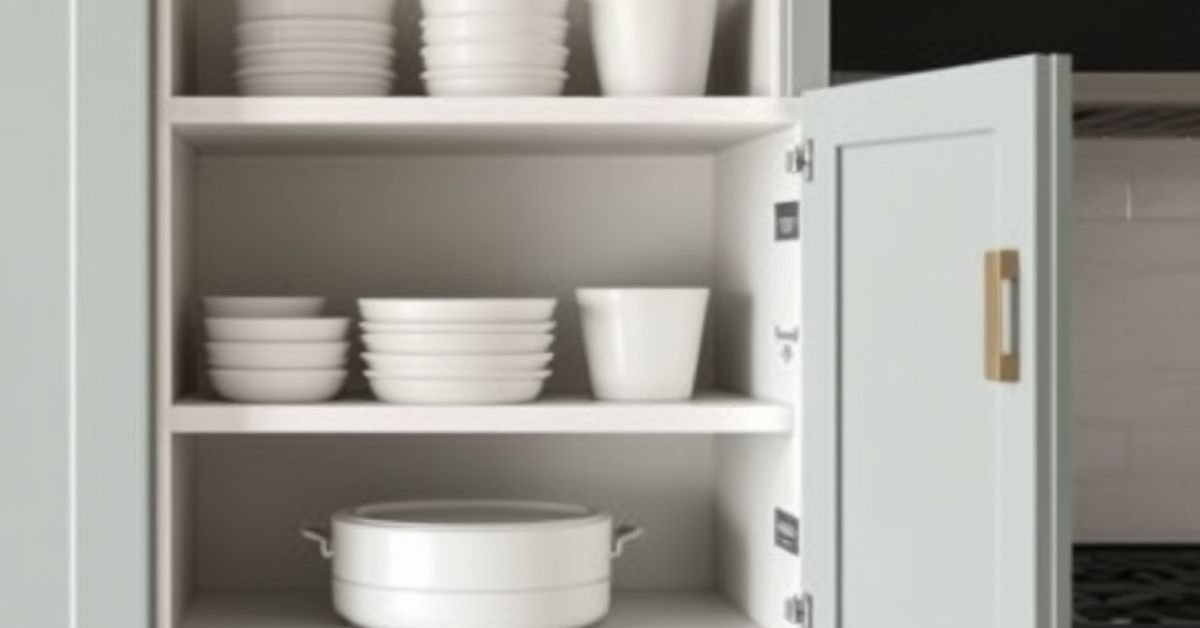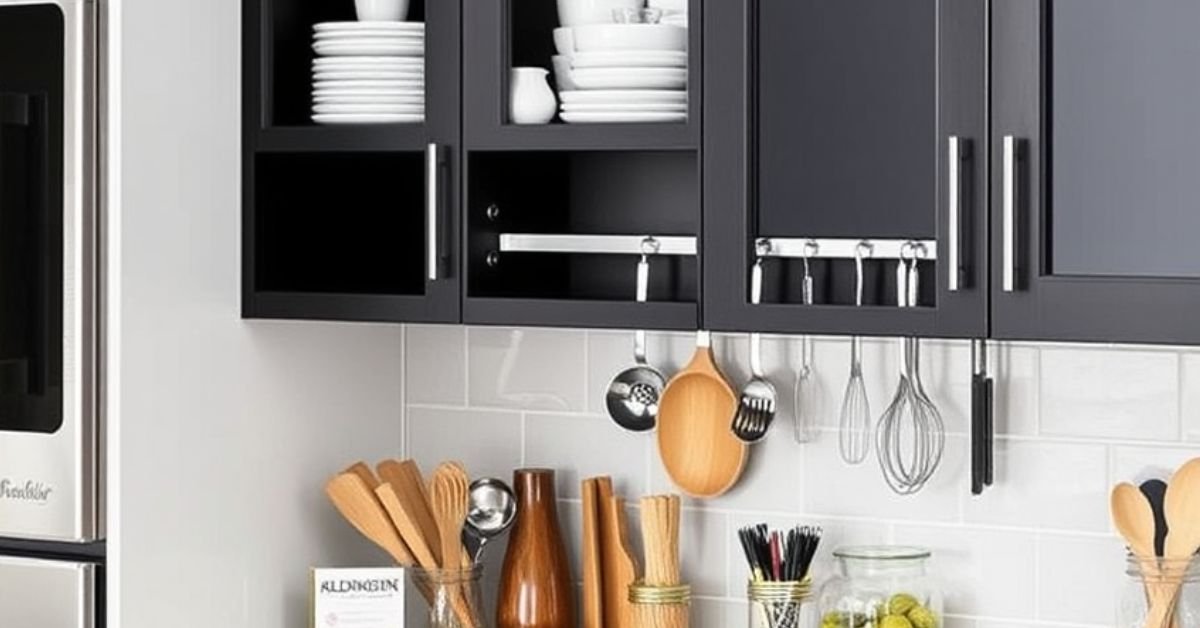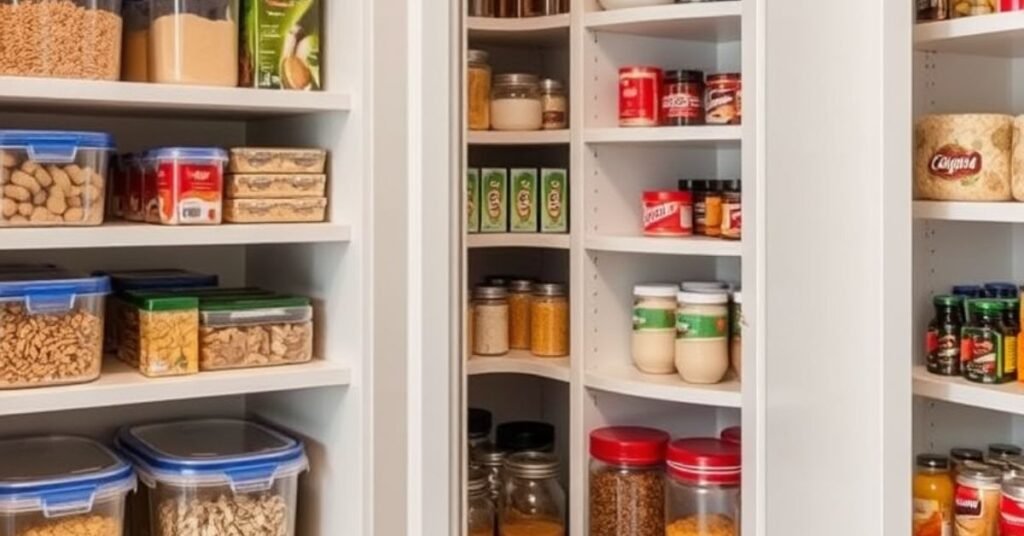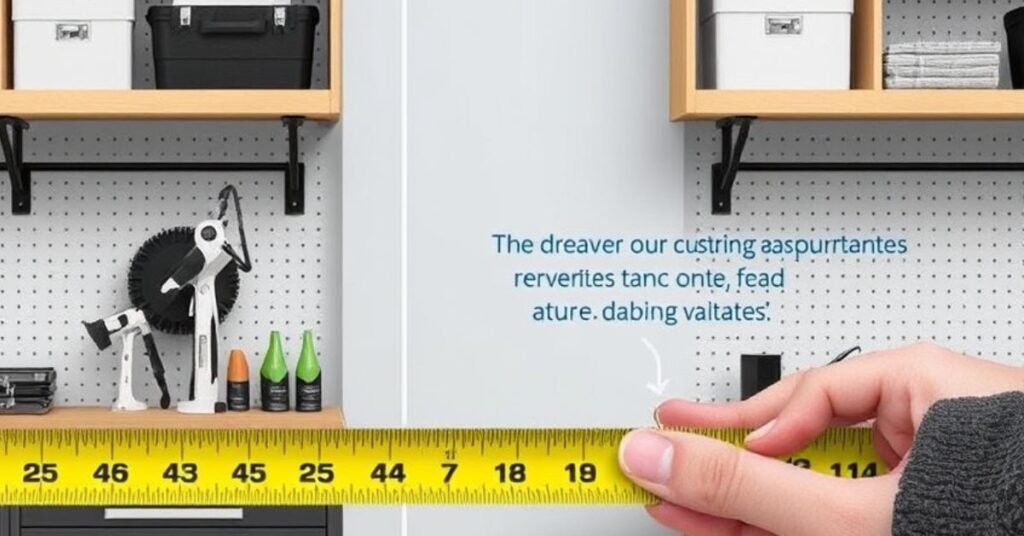

Our editorial team individually chooses every product that is suggested on neatcupkit. We might get paid if you buy something after clicking on any of these links.
A cluttered kitchen can turn meal preparation into a stressful experience. When you can’t find the right utensil or your countertop overflows with appliances, cooking becomes frustrating rather than enjoyable. The solution lies in smart kitchen organization through carefully chosen storage solutions.
Selecting the right kitchen storage transforms your space from chaotic to functional. Whether you’re dealing with a compact apartment kitchen or a spacious culinary haven, proper storage systems maximize every inch of available space. The key is understanding your specific needs and choosing solutions that work with your kitchen’s layout and your cooking habits.
This comprehensive guide walks you through everything you need to know about how to buy kitchen storage that fits your space, budget, and lifestyle. You’ll discover practical strategies for assessing your needs, comparing different storage options, and creating a kitchen that’s both beautiful and highly functional.
Good kitchen storage does more than simply hide clutter. It creates a systematic approach to kitchen organization that saves time and reduces stress during meal preparation. When every item has a designated place, you spend less time searching and more time cooking.
Effective storage cabinet options maximize your kitchen’s potential by utilizing vertical space, awkward corners, and underused areas. This strategic approach helps small kitchens feel more spacious while keeping large kitchens from becoming overwhelming. The right storage systems also protect your cookware and bakeware from damage by providing proper support and separation.
Well-planned kitchen storage increases your home’s value and improves daily functionality. A thoughtfully organized kitchen encourages healthier eating habits because ingredients and cooking tools are easily accessible. It also makes cleaning faster and more efficient, since everything has a proper place to return to after use.

Step 1: Assess Your Storage Needs
Start by evaluating your current kitchen situation honestly. Open every cabinet, drawer, and cupboard to see what you’re working with. Take inventory of your cookware, dishes, food storage containers, and kitchen utensils. Note which items you use daily versus those you access occasionally.
Measure your available space carefully, including cabinet interiors, wall areas, and countertop dimensions. Consider the height, width, and depth of each storage area. This information helps you choose kitchen storage containers and organizers that fit perfectly without wasting valuable space.
Think about your cooking patterns and lifestyle needs. Families with young children need different storage solutions than single professionals or empty nesters. Frequent entertainers require more serving dish storage, while avid bakers need specialized spaces for mixing bowls and baking sheets.
Step 2: Set Your Budget and Long-term Goals
Determine how much you’re willing to invest in kitchen storage solutions. Quality storage systems range from budget-friendly options under $50 to high-end custom solutions costing thousands. Consider this an investment in your daily quality of life and home value.
Plan for long-term needs rather than just current requirements. If you’re planning to expand your cookware collection or change your cooking habits, choose flexible storage systems that can adapt. Modular designs work well for growing needs, while fixed solutions suit stable situations.
Research different price points for similar products. Sometimes spending slightly more upfront saves money long-term through better durability and functionality. However, many budget-friendly storage ideas provide excellent value when chosen thoughtfully.
Step 3: Research Different Storage Options
Explore various kitchen storage rack systems to understand what’s available. Pull-out drawers maximize deep cabinet access, while lazy Susans make corner spaces functional. Vertical dividers organize baking sheets and cutting boards efficiently.
Compare online and in-store shopping options. Many retailers offer kitchen storage online with detailed specifications and customer reviews. However, seeing items in person helps you assess build quality and size relationships better.
Read product reviews and ratings carefully, focusing on long-term durability feedback. Look for comments about installation ease, daily functionality, and how well products hold up over time. Professional reviews often provide insights that customer reviews miss.
Kitchen Storage Cabinets
Kitchen storage cabinets provide the foundation for most organized kitchens. Base cabinets work best for heavy items like pots, pans, and small appliances. Upper cabinets suit lighter items such as dishes, glasses, and food storage containers.
Consider cabinet accessories that maximize interior space. Pull-out shelves bring items from the back forward for easy access. Drawer organizers separate utensils and small tools effectively. Door-mounted racks utilize often-wasted interior door space for spices, cleaning supplies, or towels.
Custom cabinet inserts can transform standard spaces into specialized storage. Spice racks, cutting board slots, and tray dividers create designated homes for specific items. These targeted solutions prevent the jumbled mess that accumulates in general-purpose spaces.
Drawer Systems and Organizers
Deep drawers often work better than shelves for frequently used items. They provide full visibility and easy access without requiring you to move items in front to reach those in back. This design works especially well for cookware, food storage, and kitchen utensils.
Kitchen organizer cabinet inserts transform drawer spaces into highly functional storage areas. Adjustable dividers accommodate items of various sizes while keeping everything separated and visible. This system works particularly well for cutlery, serving utensils, and cooking tools.
Consider soft-close drawer slides for smooth operation and longevity. Quality hardware makes daily use more pleasant and reduces wear on both drawers and contents. This feature becomes especially valuable in busy households with frequent kitchen use.
Wall-Mounted Storage Solutions
Wall storage maximizes vertical space without consuming valuable counter or floor area. Kitchen wall rack systems can hold everything from pots and pans to spices and cleaning supplies. These solutions work particularly well in smaller kitchens where every inch matters.
Floating shelves provide open storage that keeps frequently used items easily accessible. They work well for dishes, glasses, and decorative items that enhance your kitchen’s appearance while remaining functional. However, open storage requires more maintenance to keep items dust-free and organized.
Magnetic systems offer innovative space-saving solutions for steel cookware and knife storage. These systems mount easily on walls or inside cabinets while keeping sharp tools safely secured and readily available for cooking tasks.
Pantry and Food Storage Solutions
Dedicated pantry space requires specific storage strategies to maximize efficiency and maintain food freshness. Clear food storage containers allow you to see contents at a glance while protecting items from pests and moisture. Airtight seals help maintain freshness for dry goods, spices, and leftovers.
Adjustable shelving accommodates items of varying heights while maximizing vertical space utilization. Deep shelves work well for bulk items, while narrow shelves suit spices and condiments. Consider pull-out pantry systems that bring back items forward for easy inventory and access.
Wire basket systems provide excellent visibility and ventilation for produce storage. These solutions work well for onions, potatoes, and other items that benefit from air circulation. The open design prevents forgotten items from spoiling in dark corners.

Modern Kitchen Storage
Contemporary kitchens benefit from clean lines and minimalist storage solutions. Stainless steel and glass materials complement modern appliances while maintaining the streamlined aesthetic. Handle-less cabinets and push-to-open mechanisms create smooth, uninterrupted surfaces.
Integrated storage solutions blend seamlessly with modern kitchen design. Built-in organizers disappear when not in use, maintaining the clean appearance that modern styles require. Hidden storage compartments maximize functionality without compromising visual appeal.
Color coordination plays a crucial role in modern kitchen organization. Choose storage containers and organizers in neutral tones or colors that match your existing palette. This approach creates visual continuity while maintaining the sophisticated appearance modern kitchens demand.
Traditional and Rustic Storage Options
Classic kitchen styles accommodate more visible storage solutions that add character and warmth. Open shelving displays beautiful dishes and glassware while providing functional storage. Wooden storage solutions complement traditional cabinetry and create a cohesive, timeless appearance.
Vintage-inspired storage containers and organizers enhance traditional kitchen aesthetics. Glass jars with airtight seals store dry goods attractively while maintaining functionality. Wire baskets and wooden crates provide practical storage with authentic period appeal.
Consider how storage solutions integrate with existing architectural details. Traditional kitchens often feature crown molding, decorative brackets, and other details that storage systems should complement rather than compete with. This harmony creates a polished, intentional appearance.
Material Considerations
Durability requirements vary based on storage location and intended use. Stainless steel works well in areas exposed to moisture and heat, such as near the sink or stove. Wood provides warmth and natural beauty but requires protection from water damage in high-moisture areas.
Maintenance requirements differ significantly between material types. Stainless steel cleans easily but shows fingerprints and water spots. Wood requires periodic conditioning but develops attractive patina over time. Plastic offers easy maintenance and affordability but may not suit all design styles.
Consider how materials interact with your stored items. Some plastics can absorb odors or stain from acidic foods. Glass provides excellent visibility and won’t react with stored items, but requires careful handling to prevent breakage. Metal containers work well for dry goods but shouldn’t store acidic items long-term.
DIY vs Professional Installation
Simple storage solutions like shelf organizers and drawer dividers typically install easily without professional help. Most homeowners can handle these projects with basic tools and careful measuring. However, complex systems requiring electrical work or structural modifications need professional installation.
Consider your skill level honestly when deciding between DIY and professional installation. Poorly installed storage systems can damage cabinets, walls, or stored items. Professional installation often includes warranties and ensures proper function from the start.
Factor installation costs into your budget when comparing storage options. Some expensive storage systems become more reasonable when installation is simple, while budget options can become costly if they require professional help.
Maintenance and Care
Regular cleaning maintains both function and appearance of storage systems. Wipe down surfaces weekly and reorganize contents monthly to prevent clutter accumulation. This routine maintenance prevents small problems from becoming major organizational challenges.
Address wear and tear promptly to extend system lifespan. Tighten loose screws, replace worn drawer slides, and repair damaged components before they affect overall function. This proactive approach saves money and maintains storage efficiency over time.
Seasonal reorganization keeps storage systems functioning optimally. Rotate items based on usage patterns, moving frequently used items to easily accessible locations. This practice ensures your storage system continues meeting your changing needs effectively.
Measuring Your Space Accurately
Precise measurements prevent costly purchasing mistakes and ensure proper fit. Measure width, height, and depth of available spaces, accounting for obstacles like pipes, electrical outlets, or structural elements. Don’t forget to measure door openings that storage items must pass through during installation.
Consider clearance requirements for proper function. Drawers need adequate space to open fully, while doors require swing clearance. Factor in these operational needs when selecting storage solutions to ensure they’ll function properly in your specific space.
Document your measurements clearly and bring them when shopping for storage solutions. Many retailers provide measuring guides and templates to help ensure proper fit. This preparation prevents frustration and return trips that waste time and money.
Matching Capacity to Needs
Avoid the temptation to maximize storage capacity at the expense of functionality. Overpacked storage becomes difficult to access and maintain, defeating the purpose of organization. Leave some extra space in each storage area for easy access and future additions.
Consider how storage capacity affects daily use patterns. Extremely deep storage requires step stools or reaching tools, while very high storage limits accessibility for shorter family members. Balance maximum capacity with practical usability for your household.
Think about weight distribution when planning high-capacity storage areas. Heavy items stored up high create safety hazards and make daily access difficult. Plan storage layouts that keep frequently used items at comfortable heights while maximizing less-accessed storage areas.

The best kitchen storage solution depends on your specific needs, space constraints, and budget. Start by assessing what items you need to store and how often you use them. Consider your kitchen’s layout and available space, then choose solutions that maximize accessibility while fitting your budget. Reading reviews and seeing products in person helps ensure you select options that will work long-term in your specific situation.
In a tiny kitchen, smart storage ideas are essential for maximizing every inch of available space. Consider vertical space solutions such as wall-mounted shelves or a pot rack to hang pots and pans. Use shelf risers in cupboards to create additional layers for jars and food storage containers. Additionally, a storage cart can provide extra space for kitchen items, ensuring that your cooking area remains organized and functional.
Small kitchens benefit tremendously from well-chosen storage solutions. Focus on vertical storage, wall-mounted options, and multi-functional pieces that maximize every inch. Choose space-saving solutions like narrow pull-out drawers, door-mounted racks, and stackable containers. Many manufacturers offer storage systems specifically designed for compact spaces.
High-quality storage systems often provide better durability, functionality, and warranties than budget options. If you cook frequently or have a busy household, investing in quality storage pays off through better daily function and longer lifespan. However, many budget-friendly options provide excellent value when chosen thoughtfully based on your specific needs.
Group similar items together and store them near where you use them most. Keep frequently used items at eye level and within easy reach. Label containers clearly and maintain consistent organization systems. Regular decluttering prevents accumulation of unused items that waste storage space.